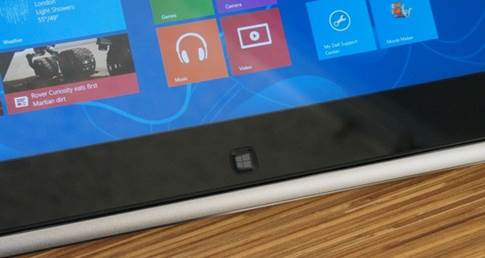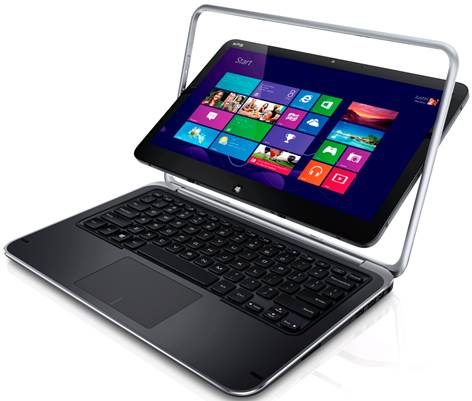Can a Windows 8 PC be used in tablet mode?
They will appear in mass quantity this autumn. But what is fascinating is how
each PC manufacturer approaches the challenge of combining the touchscreen with
the more traditional mouse and keyboard setup. With some OEMs, this means going
on the hybrid route, with 10-inch and 11-inch tablets that can fit an optional
keyboard dock. For others, it means a full PC with a touchscreen sliding out.
And with a few others, it means a laptop screen that can be folded down, leaving
you with what can only be described as an oversized tablet. That is how we will
describe the Dell XPS 12, a 12.5-inch laptop whose screen can be folded in the
hinge, allowing you to use the computer in tablet mode or, if you prefer, with
the screen facing away from the keyboard. (Yes, Dell is trying to try this
factor). It starts at $1,200, which is really a high price, but again, what we
are talking about here is a pretty high-end device: it incorporates all
components of an Ultrabook (thin and light design, an Ivy Bridge processor and
an SSD drive) with Gorilla Glass 1080p, 400 nits touchscreen. So how will using
this factor be? And how does it work as a normal Windows 8 PC? Let’s check it
out now.

Dell
XPS 12
Design and feel
If you think that Dell's other XPS
Ultrabooks are beautiful, you will like the XPS 12; it has the similar dome
design to the XPS 13 and 14, of course except the touchscreen and the hinge
which looks like an easel. Once again, Dell has adorned the lid in a cute carbon
fiber weave – a feature designed to let you know that this is a really high-end
system. Meanwhile, the palm rest and the lower part has a soft and interesting
finish that does a good job in resisting scratches and fingerprint smudges.
Under that touchable soft finish there is an aluminum alloy chassis, making the
whole machine feel sturdy – you will not notice any curvature when typing on the
keyboard or using the PC with one hand.
Dell also takes advantage of some tasteful
metal accents, including aluminum strips around the keyboard deck. Like other
XPS Ultrabooks, there is even a metal door at the bottom, hiding away the Windows
product key and any FCC certifications. The chassis that holds the screen is also
made of metal and feels sturdy. Moreover, the screen slides in and out with a comfortable
clicking sound, giving confidence in the build quality. To push the display out,
you will need to push it from the side using your fingers. Maybe you do not
mind fingerprints, otherwise you would not consider a touchscreen PC from the
start.

Dell
also takes advantage of some tasteful metal accents, including aluminum strips
around the keyboard deck
With 3.35 pounds, it feels heavy for a 12.5
inch laptop – normally a compromise with the computers that have a touchscreen.
When it comes to bringing the computer in a bag or walking around the house,
the weight will not be a problem, although we found it inconvenient to use it
in tablet mode in a long time – simply because it is too large and difficult to
use. If you use it as a tablet, you can appreciate it most when sitting on the
sofa, and placing the device on your lap. After all, we would say it will be
more likely for us to use the touchscreen in clamshell mode – by touching the
Live Tiles and other finger-friendly factors instead of using the trackpad.

With
3.35 pounds, it feels heavy for a 12.5 inch laptop – normally a compromise with
the computers that have a touchscreen.
Based on all this, you might wonder why the
hinge design this complicated is necessary. At least we can think of one
benefit. For example, unlike the Lenovo IdeaPad Yoga, the XPS 12 does not leave
the keys exposed while you're in tablet mode. That means that if you are
putting it as the tablet, you will not feel the fingers pressing the keys
below. (If you choose the Yoga, it has an optional external casing cover of the
laptop keyboard, although this seems to be an inelegant solution).
Just look around the edge and you'll find a
modest collection of ports: two USB 3.0 ports (one with PowerShare and Windows
debugging support), one Mini DisplayPort, one 3.5mm headphone jack and two
speakers – each of which is on a side. There is a volume rocker for the time
you use it as a tablet, although there are volume and mute keys on the keyboard
separately. Unfortunately, Dell has abandoned the SD card reader, just as it
did on the XPS 13. We do not want to increase the storage system; just it would
be great to take away pictures and videos from the memory card.